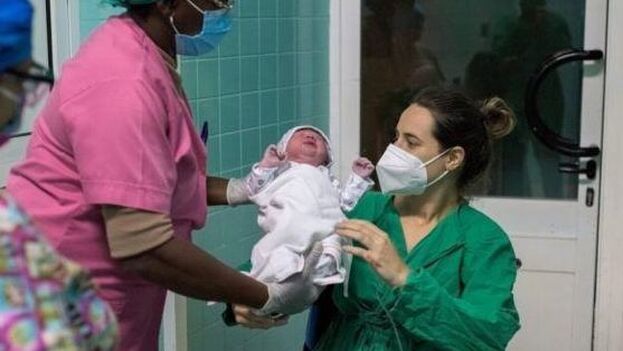
![]() 14ymedio, Havana, 11 November 2022 — With infant mortality of 7.4 per thousand live births since January 2022, Cuba fails to reverse the negative trend of previous years, particularly 2021, when the rate reached 7.6, the worst since 1996.
14ymedio, Havana, 11 November 2022 — With infant mortality of 7.4 per thousand live births since January 2022, Cuba fails to reverse the negative trend of previous years, particularly 2021, when the rate reached 7.6, the worst since 1996.
In a meeting of high-level officials, broadcast two weeks ago on Televisión Cubana, Dr. Tania Margarita Cruz, Deputy Minister of Public Health, attributed that situation to the lack of “staff and officials” involved in the hospital care of mothers and children.
Since January, 72,800 live births and 539 deaths have been recorded, said Cruz. The vice-minister’s statements stand out not only for the dramatic increase in deaths, but also because the Government points to its mismanagement as the first cause, without using the usual excuse: the US blockade and its consequences on the sector.
Nor does it insist on the responsibility for the COVID-19 pandemic, although it does point out that the coronavirus had an impact on the health of pregnant women and on the functioning of the Cuban health system. However, this doesn’t justify the fact that in 2022 the rate has been minimally reduced compared to the previous year, when the majority of the population is already vaccinated against the virus.
Cuba held a rate of less than 5 per 1,000 living infants for more than a decade. The current increase, the Deputy Minister of Public Health said, represents a setback of almost thirty years in which the Island had controlled child mortality.
During the Special Period, specifically in 1996, the country recorded a rate of 7.9, but it improved the birth rate so that, since 2000, 7 deaths per 1,000 were not exceeded. The lowest figure, of 4, was achieved in 2017 and repeated in 2018.
The Government did blame the pandemic for the rise (5 children per 1,000) in 2019, while it is now accusing the “incomplete spreadsheets” of each health care center.
Healthcare personnel — ranging from doctors and nurses to caregivers and managers — are also part of the mass exodus of Cubans, who quit their jobs and try to leave the country, despite the fact that Public Health is one of the sectors with the most restrictions against traveling.
The nefarious effects of migration on the health sector had been calculated at the end of 2021 by Ernesto René, a 34-year worker of the Maternal and Child Program (Pami), who commented in the newspaper Invasor that it was necessary to “review the motivations and barriers for the staff who work in that sensitive area.”
The year 2022 will not represent a turning point in child mortality, Cruz recognizes, since the lack of personnel rules out “the necessary effectiveness in the control and supervision that the staff must carry out,” and favors “violations of processes in some institutions of the country.”
The provinces where there is the greatest staff deficit are Pinar del Río, Ciego de Ávila, Camagüey, Guantánamo, Santiago de Cuba, Granma, Mayabeque, Villa Clara and Havana. With 13.6 deaths per 1,000 live births, Ciego de Ávila continues to have the worst results, followed by Pinar del Río (9.6), Santiago de Cuba (9.3) and Las Tunas (8.7), at the end of 2021.
The low infant mortality rate was, traditionally, one of the figures most used by the Cuban Government to demonstrate its “achievements” in public health. The deterioration of hospital facilities, the low state budget dedicated to improving them (only 2% of the total) and the lack of health personnel aggravate the situation, which has been critical for years.
Translated by Regina Anavy
____________
COLLABORATE WITH OUR WORK: The 14ymedio team is committed to practicing serious journalism that reflects Cuba’s reality in all its depth. Thank you for joining us on this long journey. We invite you to continue supporting us by becoming a member of 14ymedio now. Together we can continue transforming journalism in Cuba.
